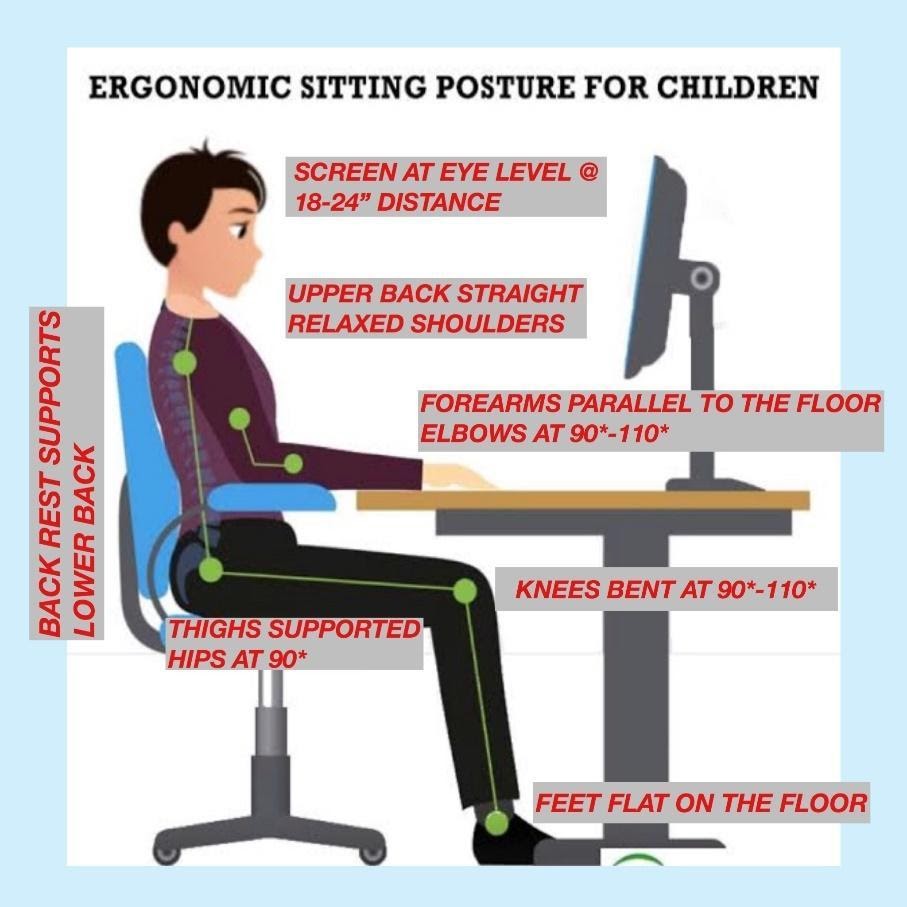Kayaan, a student of third grade, wakes up at 7:30 am to get ready for school. His first class starts at 9 am and that is when he sits in front of a laptop and greets his teacher virtually!
Yes! Life has drastically changed for kids across the globe. With COVID 19 and social distancing, online classes have become the new normal. Majority of the schools are shut. They are using apps, WhatsApp messages, YouTube links and emails to provide study material and assign homework. Children are being forced to stay indoors and adjust to the changing dynamics of studying.
It's a double whammy for parents who need to juggle with their own workloads along with the educational needs of their children. And that’s not all. There is another challenge lurking around.
How to figure out the right ergonomics for kids?
Just as adults require ergonomic workstations for their jobs; we need to consider proper fit and alignment for our children as they learn virtually. Height adjustable study tables and chairs are perfect. However, props can be used to make sure that kids sit with good posture. But why is good posture important for kids?
How to figure out the right ergonomics for kids?
Good posture for kids is as important as eating healthy, staying active and exercising. Poor ergonomics at early ages may lead to spinal issues such as spondylitis, kyphosis and scoliosis. Kids may complain of neck pain, lower back pain, and hunched appearance. Permanent changes in the spinal alignment can lead to chronic pain, hunched appearance and affect balance when walking or running. It can also cause long-term abnormal bone growth and be linked to mood changes, headaches, breathing, digestive problems, low self-confidence, and stress.
The following are basic ergonomics for kids attending online classes from home that will help them in sitting with the right posture

- FLAT FEET ON THE FLOOR:Keep both feet on the floor, with the knees at a 90-110-degree angle. This will distribute weight better through the rest of the body. Chairs with adjustable seats and footrests are perfect. However, If you don’t have an adjustable chair then create a footrest out of a stool, box, block or storage crate.
- NEUTRAL SPINE: Educate your children to sit with their rear end in the back of the chair and feet on the floor. This will allow the child to have an upright posture more easily. If the seat is too deep, then use a cushion to support the lower back.
- ARM PLACEMENT: Forearms should be parallel to the floor with the child’s elbows at a 90-110 angle, especially when typing.
- UPPER BACK: Instead of leaning into the computer or tilting far away, the shoulder blades should be resting on the back of the chair. No hunching or forward head posture.
- EYES: Eyes should be parallel with the top of the computer screen to decrease the chance for straining the neck. Teach kids to sit at 18-24 inches away from the screen. Encourage them to rest eyes periodically, by looking away from the screen, or closing eyes or blinking.
Follow the 20-20-20 rule: Every 20 minutes you look at an object 20 feet away for at least 20 seconds. This allows your eyes to relax and become more lubricated as a result of increased blinking. This will help decrease eye strain and headaches.
- DIGITAL RECESS: Encourage mandatory breaks from the screens after every class is finished or every 30 mins. Set alarms if need be. This time should be utilised by walking around, drinking water, eating a snack etc.
Hopefully, these pointers can help you and your family navigate this new terrain and make the most out of at-home learning. Finally, please remember that kids are great imitators so be a good role model for your kids to emulate. Use the right ergonomics and lead by example.
Author Bio:
Urvashi Aggarwal- ACE certified fitness expert and online coach.
Watch out this space for more such insightful tidbits from parents, teachers and child-care experts.
Follow us on: www.actcorp.in/activate-learning/blogs

